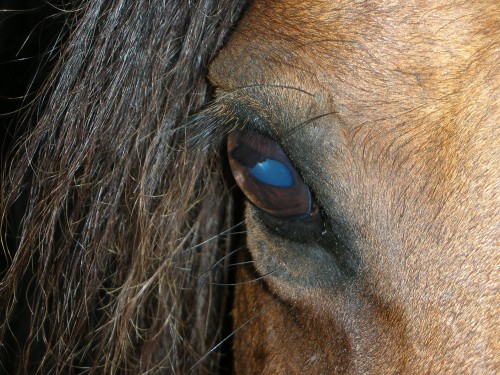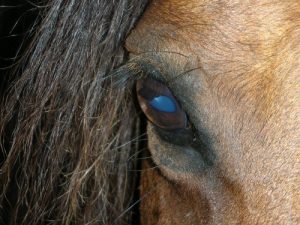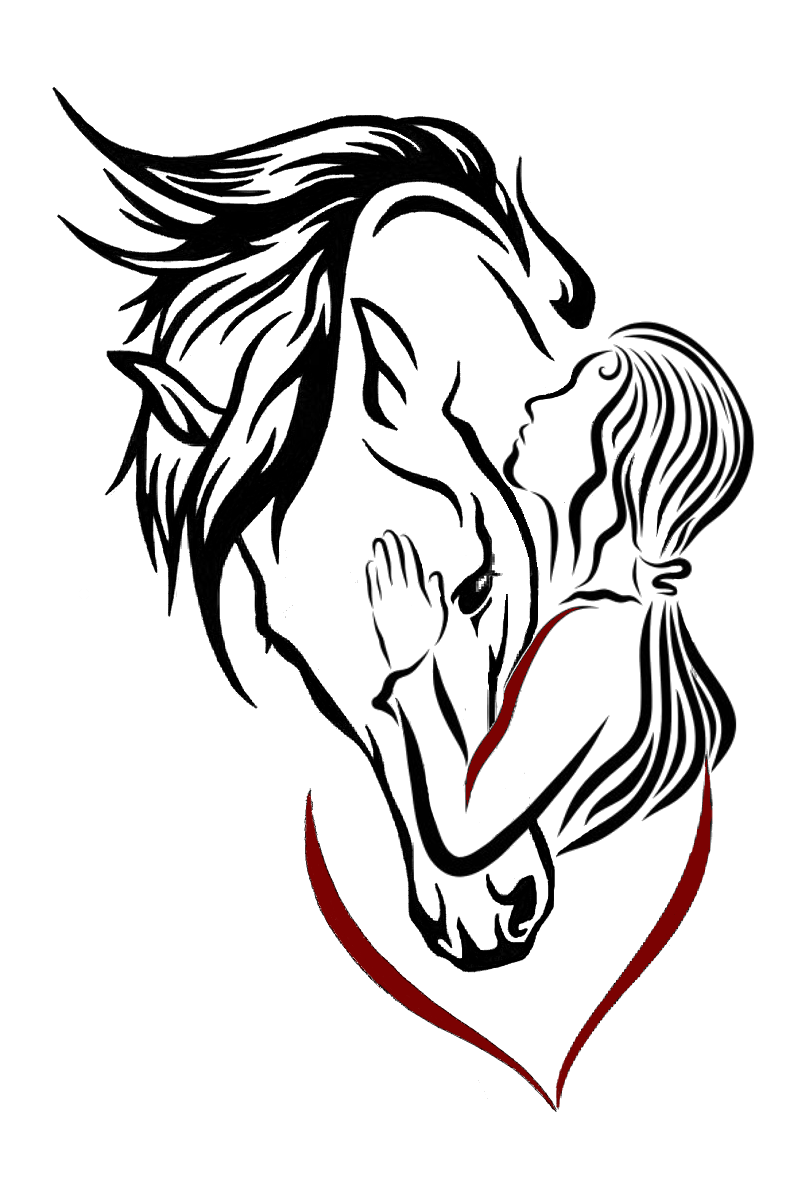Calming Signals in Horses

 I first came across this concept in dogs a few years ago, through my sister (who has trained as a dog behaviourist and trainer with Turid Rugaas, who was the first to identify these gestures in dogs) and as I observed my horse and others at our yard, I was coming to feel more and more strongly that horses too were making use of these calming-gestures, but that (as with dogs), this behaviour was being drastically mistinterpreted by the humans around them.
I first came across this concept in dogs a few years ago, through my sister (who has trained as a dog behaviourist and trainer with Turid Rugaas, who was the first to identify these gestures in dogs) and as I observed my horse and others at our yard, I was coming to feel more and more strongly that horses too were making use of these calming-gestures, but that (as with dogs), this behaviour was being drastically mistinterpreted by the humans around them.
A horse that turned its head away was ‘ignoring’ his human. A horse that was stuck and seemingly unresponsive was being ‘disrespectful’. A horse that was trying to snatch food at every opportunity was being ‘greedy’ and ‘rude’. A horse that licked-and-chewed was being ‘submissive’ and ‘showing it was ready to accept the human as its leader’. (Turid’s example for a dog and its handler here could just as well describe horse-human interactions: “Dad calls Prince and has learned in class that he needs to sound strict and dominant so that Prince will understand who is in charge. Prince finds dad´s voice to be aggressive, and being a dog he instantly give dad a calming signal in order to make him stop being aggressive. Prince will perhaps lick his own nose, yawn, turn away – which will result in dad becoming angry for real, because dad perceives Prince as being pig-headed, stubborn and disobedient. Prince is punished for using his calming signals to calm dad. This is a typical example of something that happens on an everyday basis with many dog owners.“)
If you looked at the equine behaviours above in the light of canine calming gestures – they took on a whole other meaning… The horse that had his head/eyes averted, was trying to ask his human to tone down body language that he was finding too “loud”. The horse that had his feet stuck and his brain tuned out, had gone into shut-down, unable to process the stimulii he was being exposed to (a level of the “freeze” response). The horse that was constantly snatching food, was trying to calm itself by eating. The horse that was licking-and-chewing was trying to signal to her human, that she just wanted to be friends, and that there wasn’t any need for the “aggressive” body language. Instead of getting “louder” with these horses, or punishing them for “disrespect”, this interpretation suggested that the correct answer might in fact be to reduce the pressure – to be quieter, less threatening…
I experimented a bit with the horses that I came into contact with, to find out what happened when I reacted to the types of signals above (turning head away, licking and chewing, freeze-up), by backing off, stopping what I was doing, averting my own gaze/turning my body away, even making licking-and-chewing signals myself? The results were really interesting. Instead of the horses reacting as though I was labelling myself a pushover, or somehow “lower-ranking” on the hierarchy (as conventional dominance/leadership thinking teaches), they reacted with visible relief (and some surprise!). Their response was to calm, to become softer in their body language, less tense and anxious, quieter in their body language and less aggressive and pushy rather than more.
These reactions made me even more certain that horses too were using calming signals to communicate with each other and with humans, and that seeing everything through a prism of leadership/dominance was resulting in humans inadvertently heightening the pressure on horses that were under stress, by getting “louder” in their body language, or punishing for seeming “disobedience”.
At this point, I was searching for more information on calming signals in horses to try confirm what I was seeing. I found Andy Beck’s website (here), where he documented his observations of horse behaviour and communication in the four semi-wild family herds that he manages in NZ. (He talks about the common misconceptions around “dominance” in relation to horses (see article here), and argues for a model of horse-behaviour that is more cooperative and less antagonistic (see an index of his articles here).) I was particularly struck by the last sentence of his article on “Dominance and the Horse,” where he concludes: “…if we did want the horse to accept us, learn from us and trust us, we would want to behave as if we were a head mare, or perhaps benevolent and protective harem stallion – in which case we would signal our high status best by regular and predictable socialising, unflappable calmness, confidence and self-control.” He points out that many of our horses are living in extremely “unnatural” environments, and that the petty aggression and status bickering that we see in our fields is a demonstration of that rather than a model of “natural” horse behaviour that we should strive to follow.
Next I found German ethologist, Marlitt Wendt’s website (here) and Marlitt’s two-part article on calming signals in horses. (And dated Sept 2011 – in a cool demonstration of synchronicity.) (Articles are: part one and part two.) Marlitt lists the most important calming signals that she has observed in horses:
- empty-chewing
- licking the tongue over the mouth
- yawning
- keeping the head low, maybe bending the forelegs
- a slight lateral bend of the ears
- averting the gaze and the head
I would add a couple of additional calming behaviours to that list:
1) making a curving approach rather than approaching in a direct line
2) slowing down actions and movement
3) eating to calm itself
(And I’m certain that there are more to add…)
I particularly liked Marlitt’s concluding answer to the question: “How should we respond when a horse is making calming-signals to us?” (my translation and emphasis in the quote below): “…we should recognise that the horse is trying to have a dialogue with us, it is trying to communicate something: either that it feels threatened by us, overwhelmed by the situation or is otherwise uncomfortable. The appropriate response is to de-escalate the situation in question carefully […] The use of appeasement and calming signals is a normal form of communication of the horse; it gives us clues as to the emotional state of the animal, and helps us to assess the situation in an early stage, before things have progressed to genuine conflict, [which may either be expressed as] escape behaviour or aggression.“
Marlitt makes the point that a horse may learn not to show calming signals, if it has learnt that humans never respond to them. “A horse may then feel that it has no other option but to express his concerns in a way that cannot be ignored, so in the future it may not try to appease, but go straight for confrontation.” She makes the point that every horse will eventually be so emotionally driven into a corner that it will feel it has no other route but confrontation, but that it will depend on the horse’s personality how much it will try to appease before it attacks. She also points out that in horses that are introverts, these calming-signals can be extremely subtle and easily missed.
I think that this is an extremely important piece of the subtleties of horse communication and behaviour, and I would love to see much wider awareness of these signals and their significance.
<source>
